North Dakota’s prairie pothole wetlands are under threat from rapid oil and agricultural development.
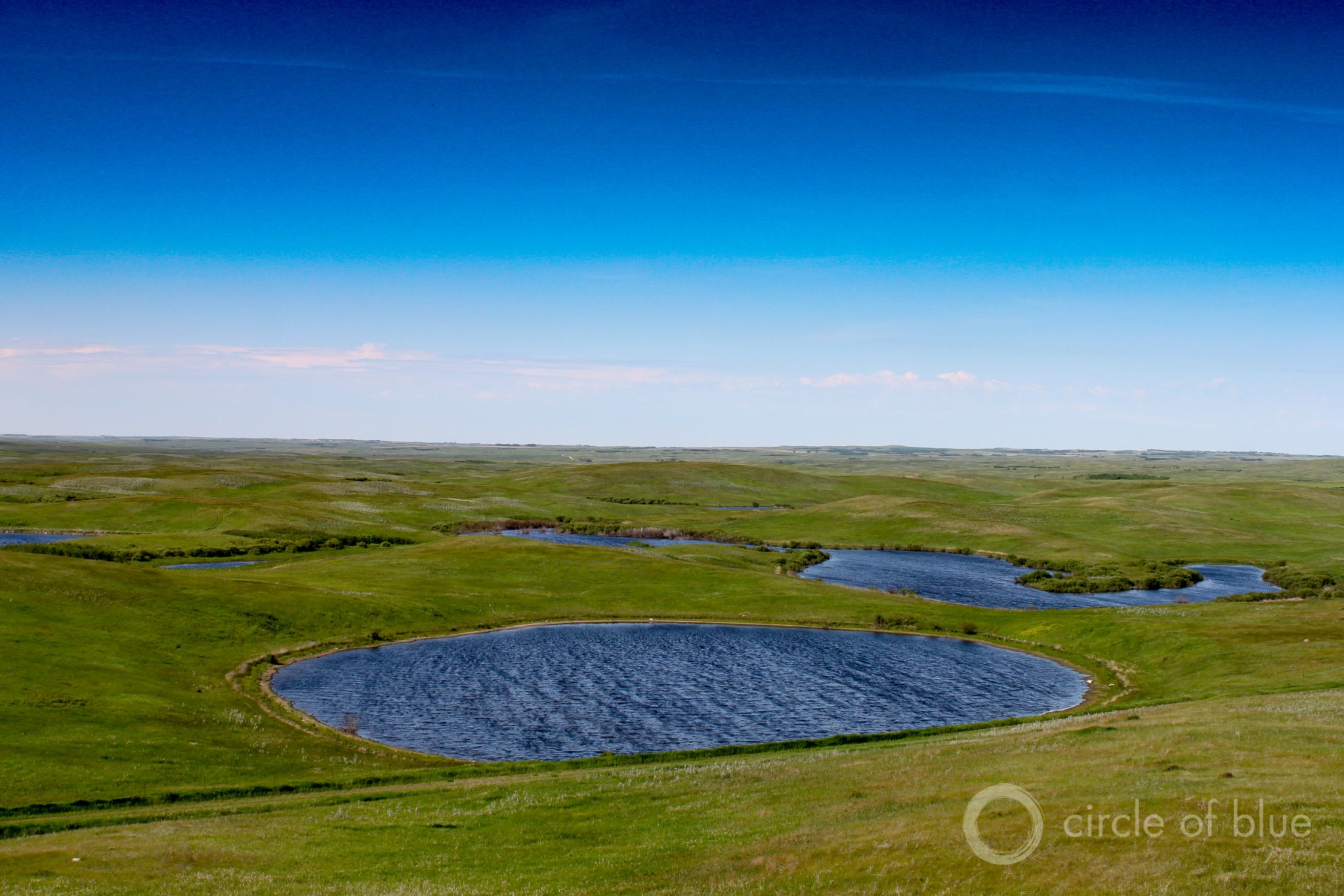
Tucked into folds of rippling grassland, thousands of small wetlands dot the Lostwood National Wildlife Refuge in western North Dakota. The refuge preserves an 11,000-hectare (27,000-acre) remnant of North America’s Prairie Pothole Region, a vast nursery for the continent’s waterfowl that once stretched from northern Iowa to southern Alberta. The pothole wetlands were formed by melting ice blocks deposited when glaciers retreated across North America 10,000 years ago, but development over the past two centuries has destroyed nearly two-thirds of them. Wildlife managers in the Dakotas are racing to protect those that remain from a new wave of farm expansion and oil exploration. Their status under the federal Clean Water Act, however, is ambiguous, which leaves the fate of many potholes at the mercy of voluntary conservation by landowners.
Photo © Codi Kozacek / Circle of Blue
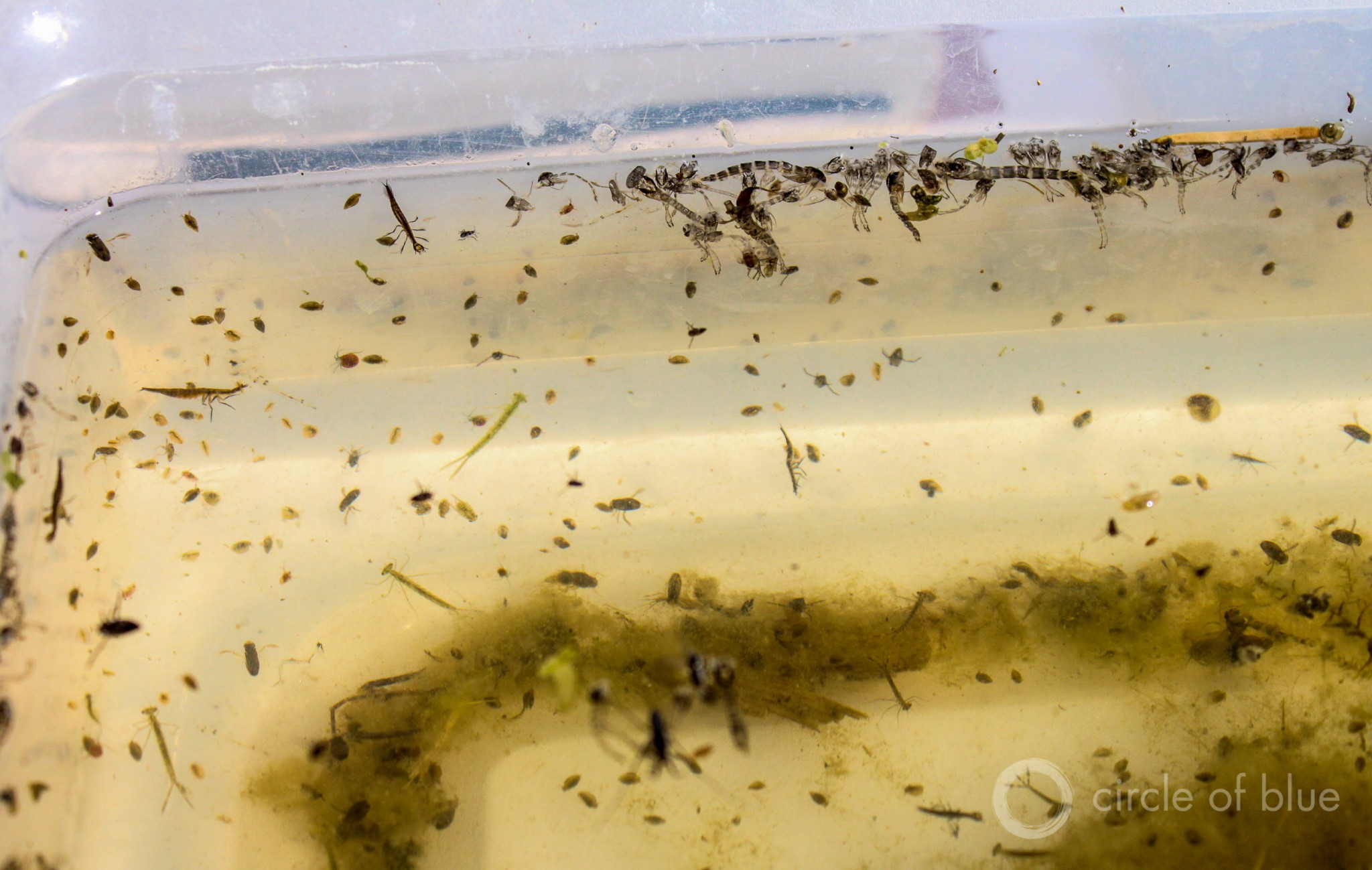
The larval forms of insects and other aquatic invertebrates found in North Dakota’s prairie potholes provide a rich diet for nesting ducks. The smallest ephemeral wetlands, many less than one hectare (2.5 acres) in size, are often the most productive and are the first to thaw in spring when migrating birds arrive. They are also the easiest to drain, said Neil Shook, refuge manager of the Chase Lake National Wildlife Refuge east of Bismarck, N.D. In the most water-rich areas of the Prairie Pothole Region, there can be more than 45 of these small wetlands per square kilometer (116 per square mile). The sheer number of ponds is a boon for ducks that are territorial and will guard their turf from other nesting pairs of the same species.
Photo © Codi Kozacek / Circle of Blue
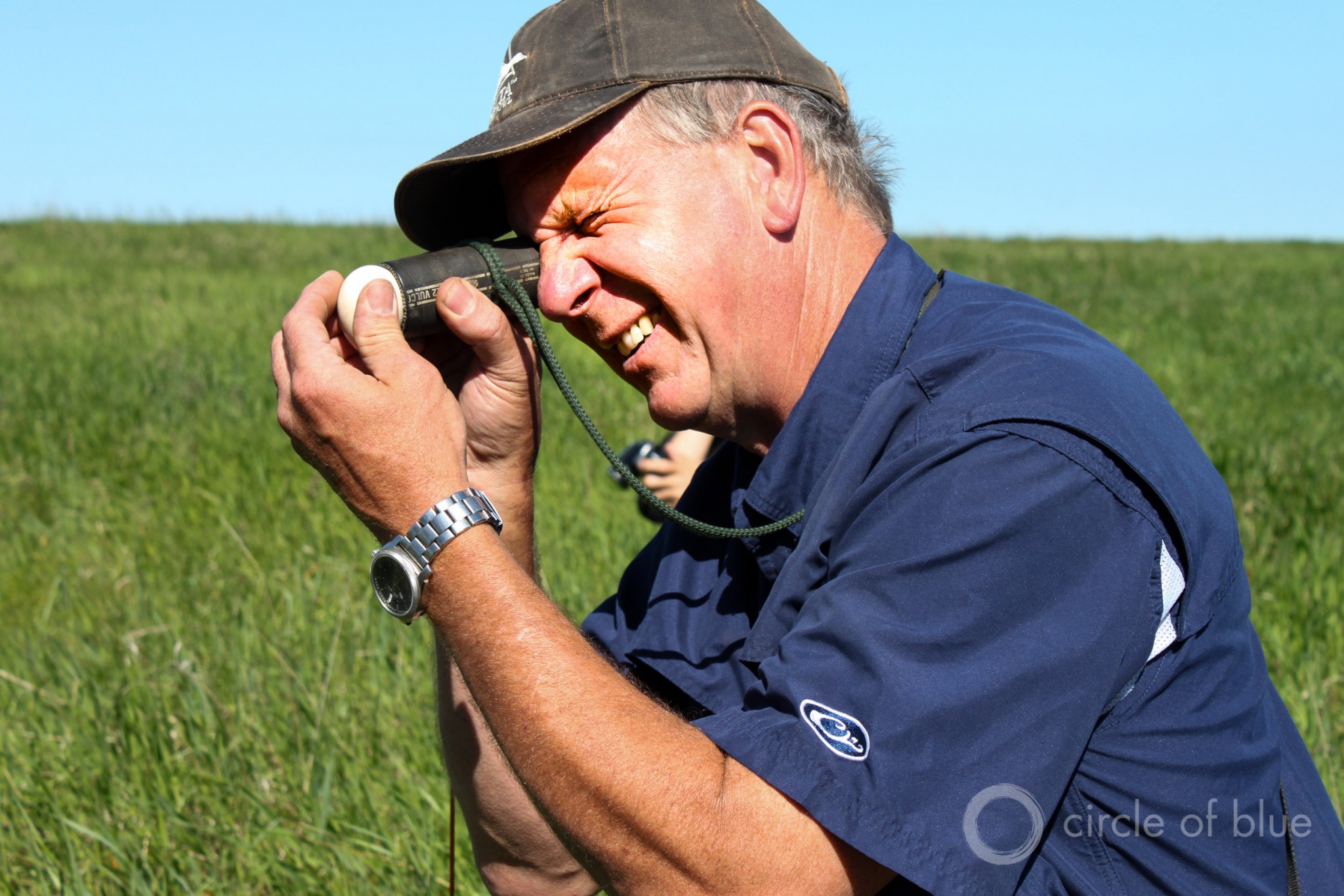
Frank Rohwer, president and chief scientist of Delta Waterfowl, uses a method known as “candling” to gauge the development of a duck embryo at a nest site near Devils Lake, N.D. The Prairie Pothole Region is called the “Duck Factory” of North America because more than half of the continent’s ducks are born there each year. But while unusually wet conditions across the northern prairies have buoyed duck populations in recent years–populations across the United States and Canada were 43 percent above the long-term average in 2015–conservation groups are concerned that habitat loss could quickly degrade those numbers when dry weather returns.
Photo © Codi Kozacek / Circle of Blue
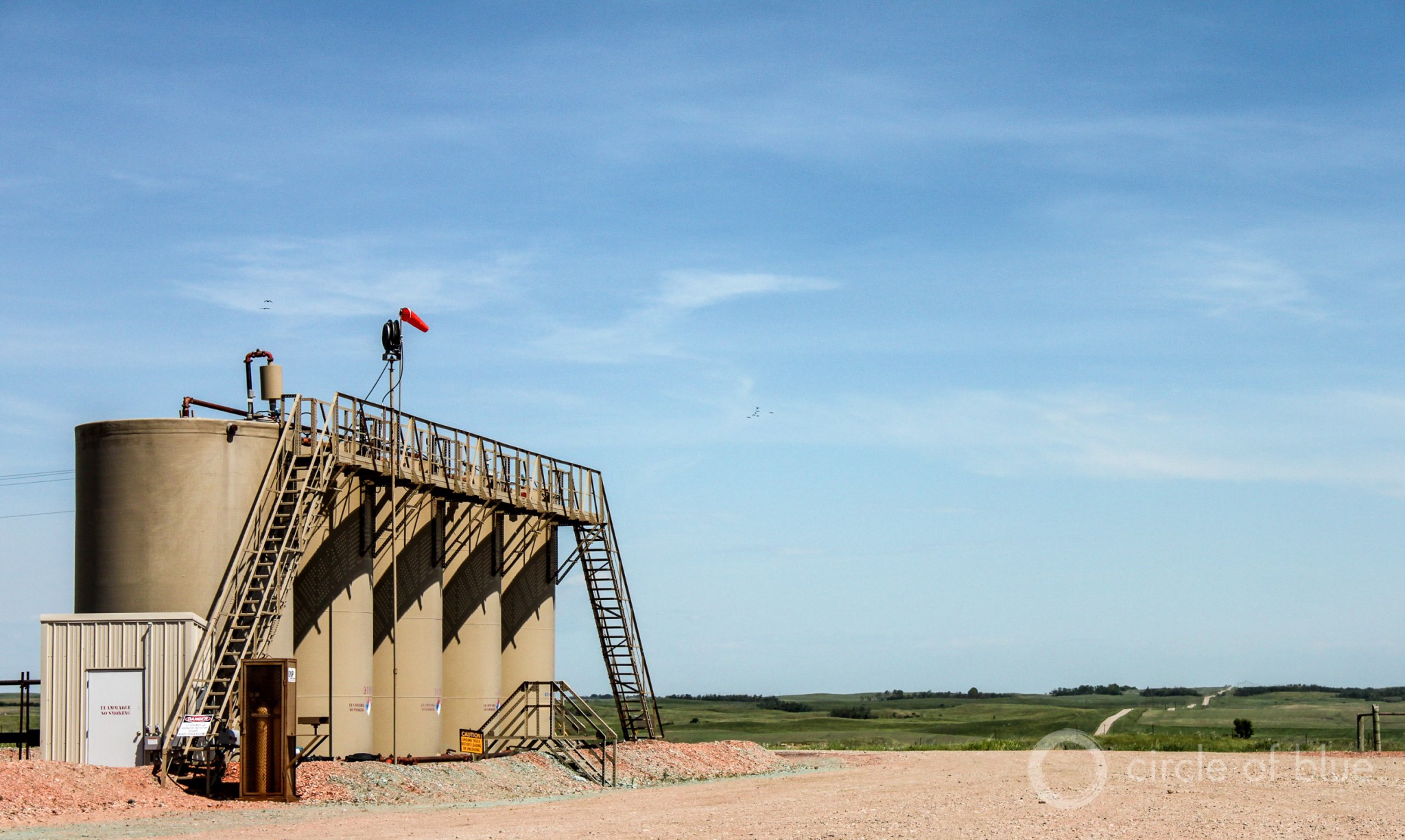
The Bakken oil boom emerged in the past decade as a new threat to prairie pothole wetlands. In the five-county wetland management district surrounding Lostwood National Wildlife Refuge, 4,400 wells were drilled between 2005 and 2012. The rapid pace of energy development thrust managers at the refuge into a novel role as mediators and watchdogs as they worked with oil companies to limit wetland degradation. Most companies are open to communication and cooperate to avoid wetlands as much as possible, said Kory Richardson, the refuge manager at Lostwood. Still, while mineral rights underlying the refuge itself are off limits, an estimated 800 wells were drilled on privately-owned wetland conservation easements within the Lostwood district.
Photo © Codi Kozacek / Circle of Blue
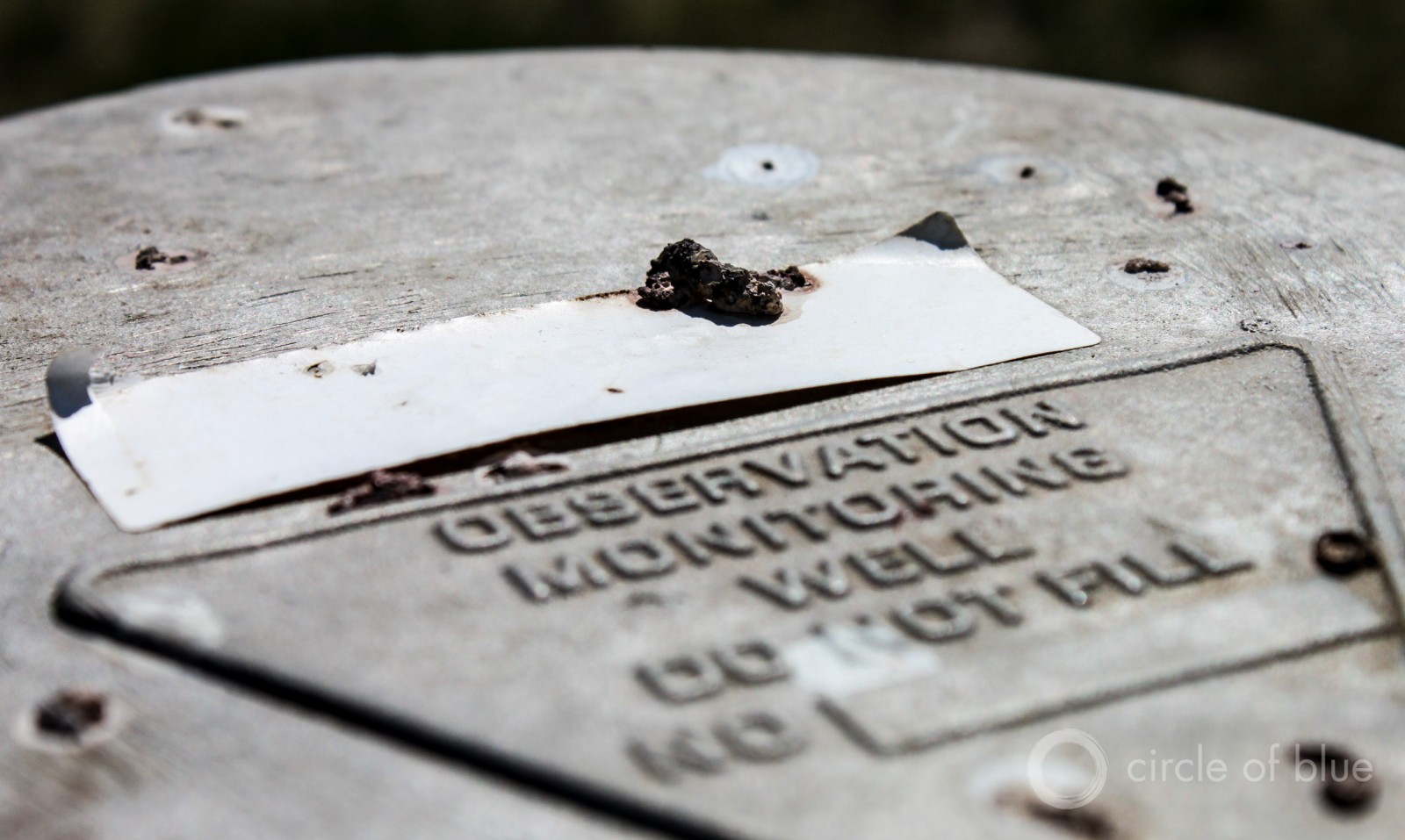
Oil development and wetland conservation can be tricky to reconcile. Seismic testing, road and well pad construction, and water usage for hydraulic fracturing all have the potential to disturb or destroy wetland environments. One of the biggest challenges is safely disposing of the extremely salty wastewater, called brine, that flows out of oil wells. Brine spills can contaminate wetlands and kill vegetation. They take years to remediate. According to researchers at Duke University, there have been more than 3,900 brine spills in North Dakota. At this spill site near Lostwood National Wildlife Refuge, groundwater wells monitor for possible brine contamination.
Photo © Codi Kozacek / Circle of Blue
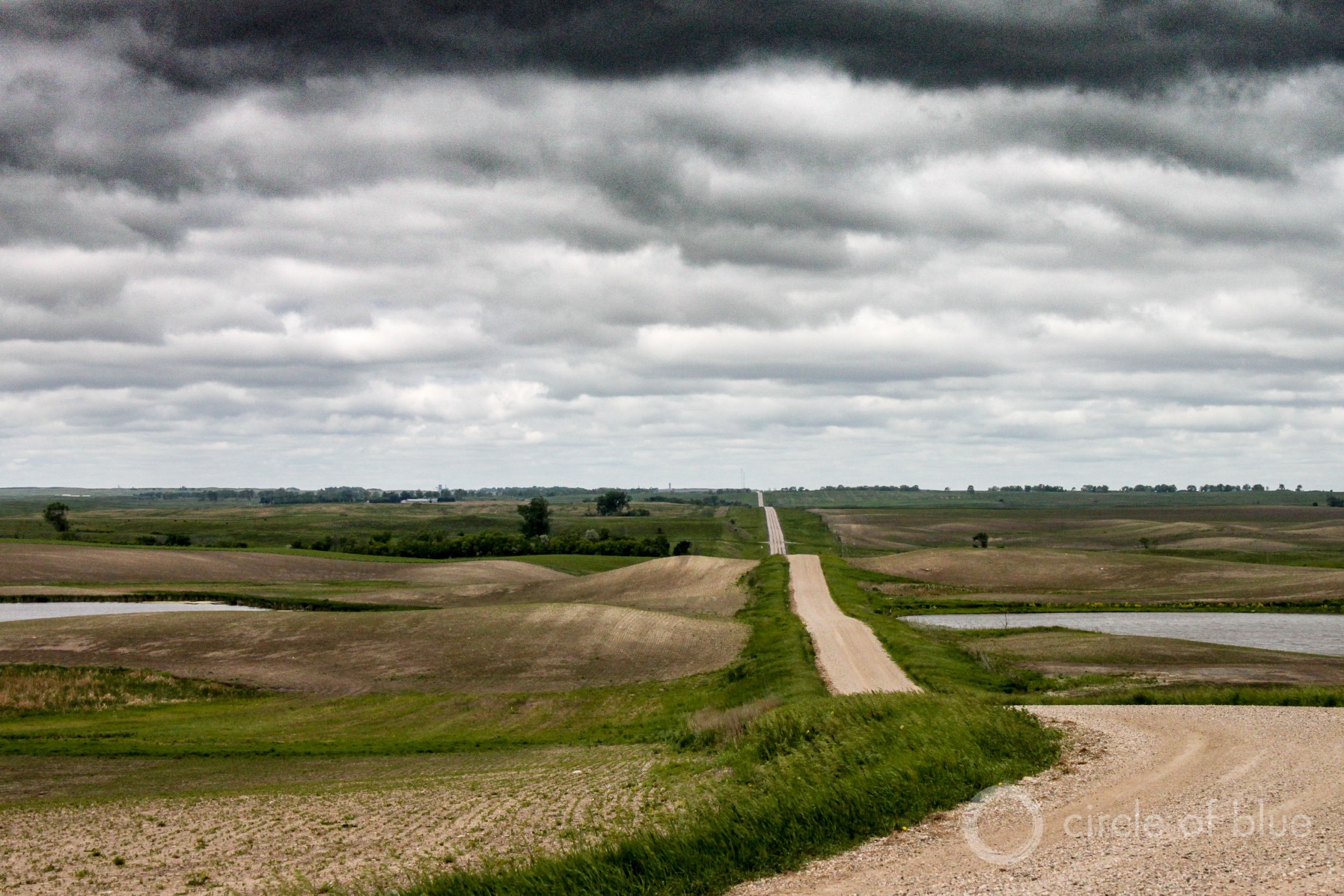
Not so long ago, the hills surrounding Chase Lake National Wildlife Refuge were a tableau of native prairie. But facing record prices for corn and soybeans, many farmers decided in the past five years to convert their land to row crops. The move was facilitated by cuts to the federal Conservation Reserve Program, an initiative under the Farm Bill that pays farmers a per-acre rate to keep grasslands and wetlands intact. While the number of acres under CRP protection dropped across the country, North Dakota registered some of the biggest losses in the nation. From a peak of nearly 1.4 million CRP hectares (3.4 million acres) in 2007, the state has just 607,000 hectares (1.5 million acres) enrolled in the program now. Farmers are once again eager to sign up for CRP as commodity prices drop, but a national cap of 9.7 million hectares (24 million acres) rules out many potential contracts.
Photo © Codi Kozacek / Circle of Blue
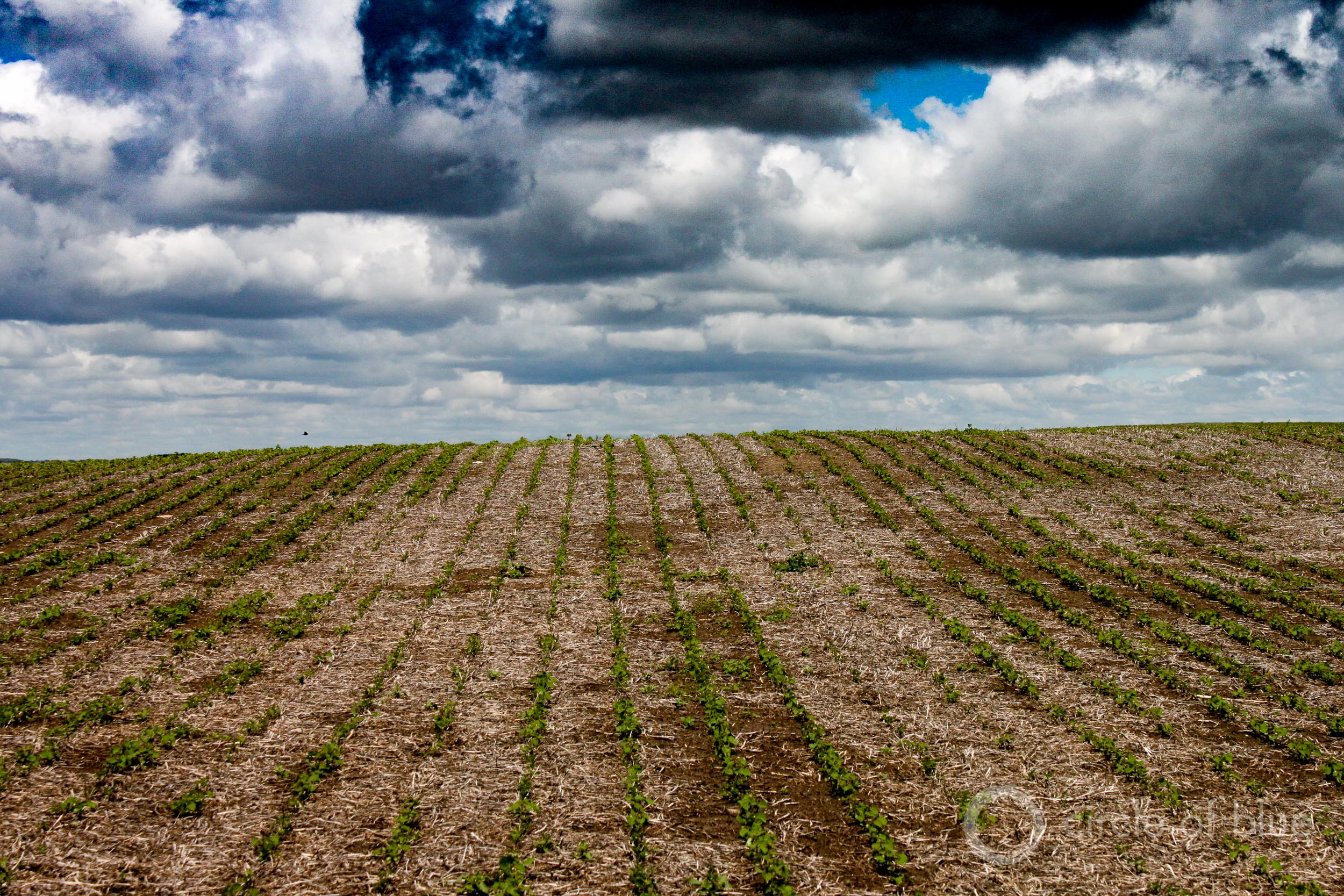
When landowners decide to “break” prairie to make way for row crops, they first burn their fields then treat them with herbicides before planting a crop like no-till soybeans. “I remember during the first Gulf War seeing images when Saddam lit all of those oil wells,” said Neil Shook, refuge manager at Chase Lake. “That’s the image that happened here in 2012. There were plumes of smoke everywhere. It happened so quick. It was overnight. What had existed for decades on this landscape was just gone.” He recalls one stretch of prairie where sharp tailed grouse would gather each year in a lek to perform courtship displays. After the prairie was broken, “I saw the grouse dancing on soybeans,” Shook said. Native prairies are essential to the productivity of prairie potholes, providing cover for the nests of grassland birds and waterfowl, which can lay their eggs more than 3 kilometers (2 miles) away from a wetland.
Photo © Codi Kozacek / Circle of Blue
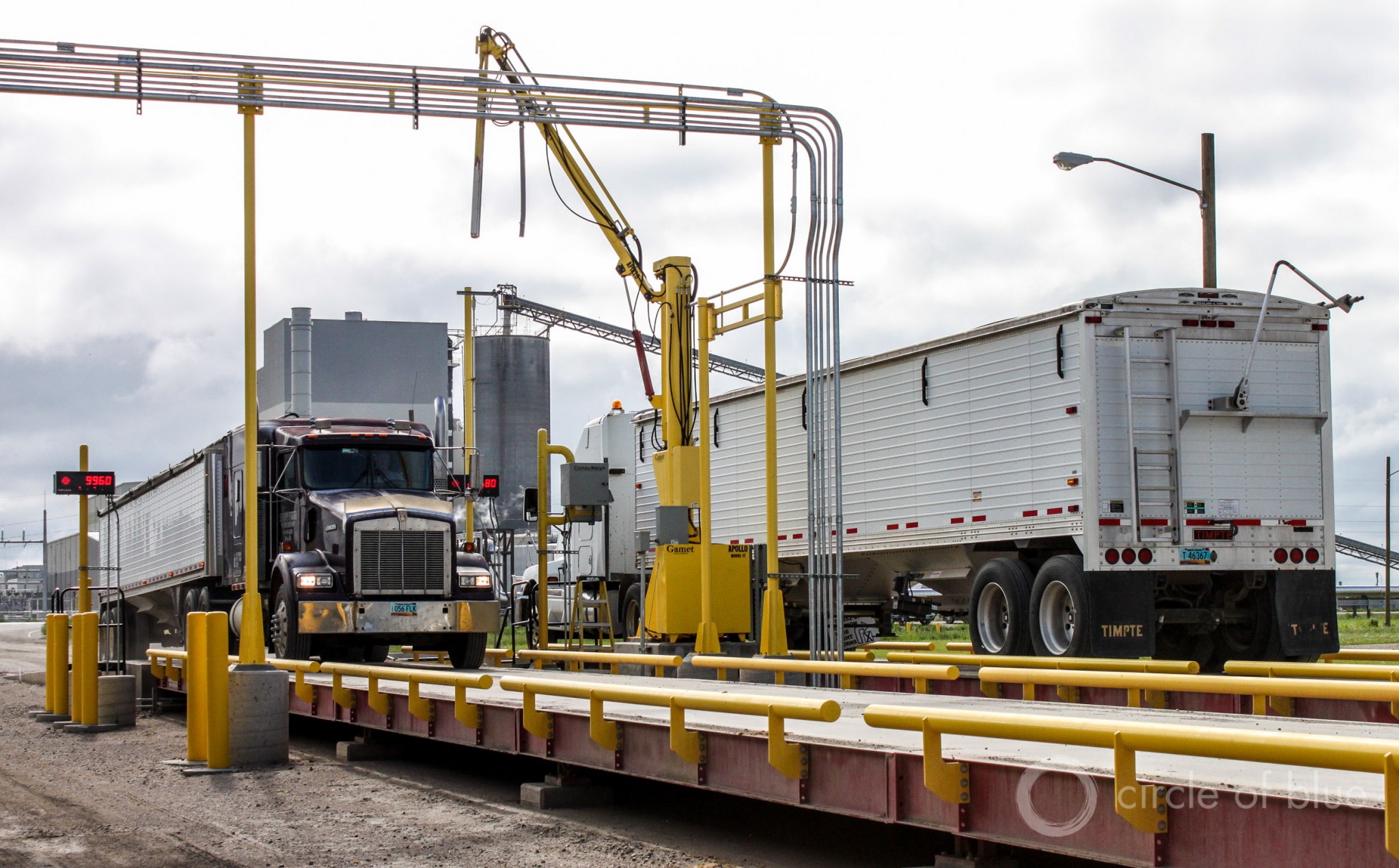
“To most people, North Dakota is a big, flat, square space in the center of the map next to Canada,” said Robert Carlson, former president of the North Dakota Farmers Union. “To those of us who live here, it’s agriculture.” Historically that meant ranching cattle or cultivating grains like wheat, barley, and flax, but corn is making big gains due to favorable weather, advancements in genetically modified seeds, and growing demand for biofuel production. Corn acreage has tripled in the state since 2000, peaking at nearly 1.6 million hectares (4 million acres) in 2013. Much of it ends up at ethanol plants like Dakota Spirit AgEnergy, a facility near Jamestown, N.D. that local officials say has helped secure the rural economy. As during previous agricultural booms, the expansion came at the expense of prairies and wetlands, intensifying floods and nutrient pollution, according to conservation groups.
Photo © Codi Kozacek / Circle of Blue
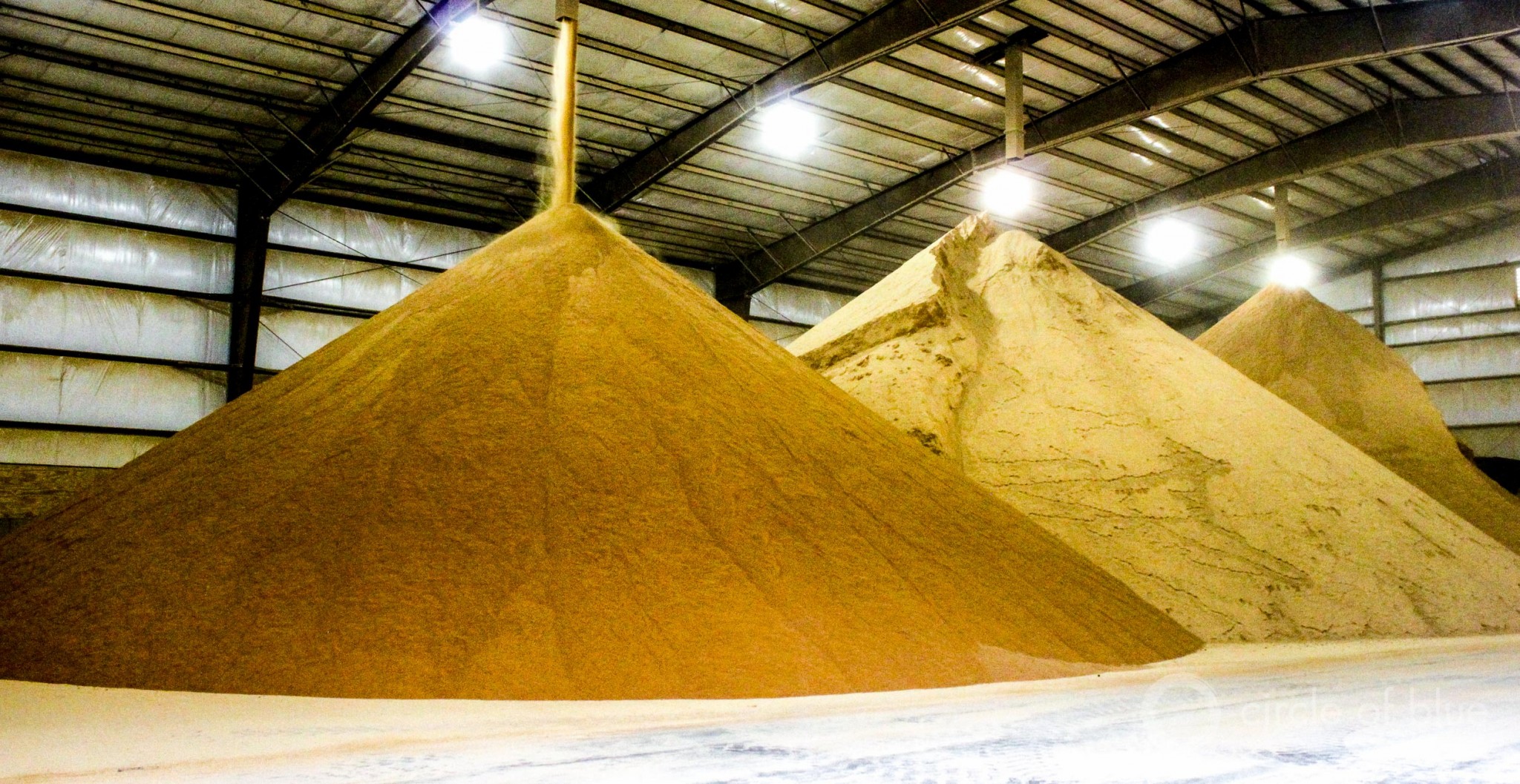
Mounds of golden distillers grains at the Dakota Spirit AgEnergy ethanol plant will be sold as a high-protein animal feed. The plant, completed a year ago, generates 246 million liters (65 million gallons) of ethanol each year, as well as 190,000 metric tons of distillers grains, an ethanol byproduct. Spurred by federal mandates under the Renewable Fuel Standard, ethanol production in North Dakota grew ten-fold since 2005. The $US 640 million industry now consumes approximately half of the state’s corn harvest.
Photo © Codi Kozacek / Circle of Blue
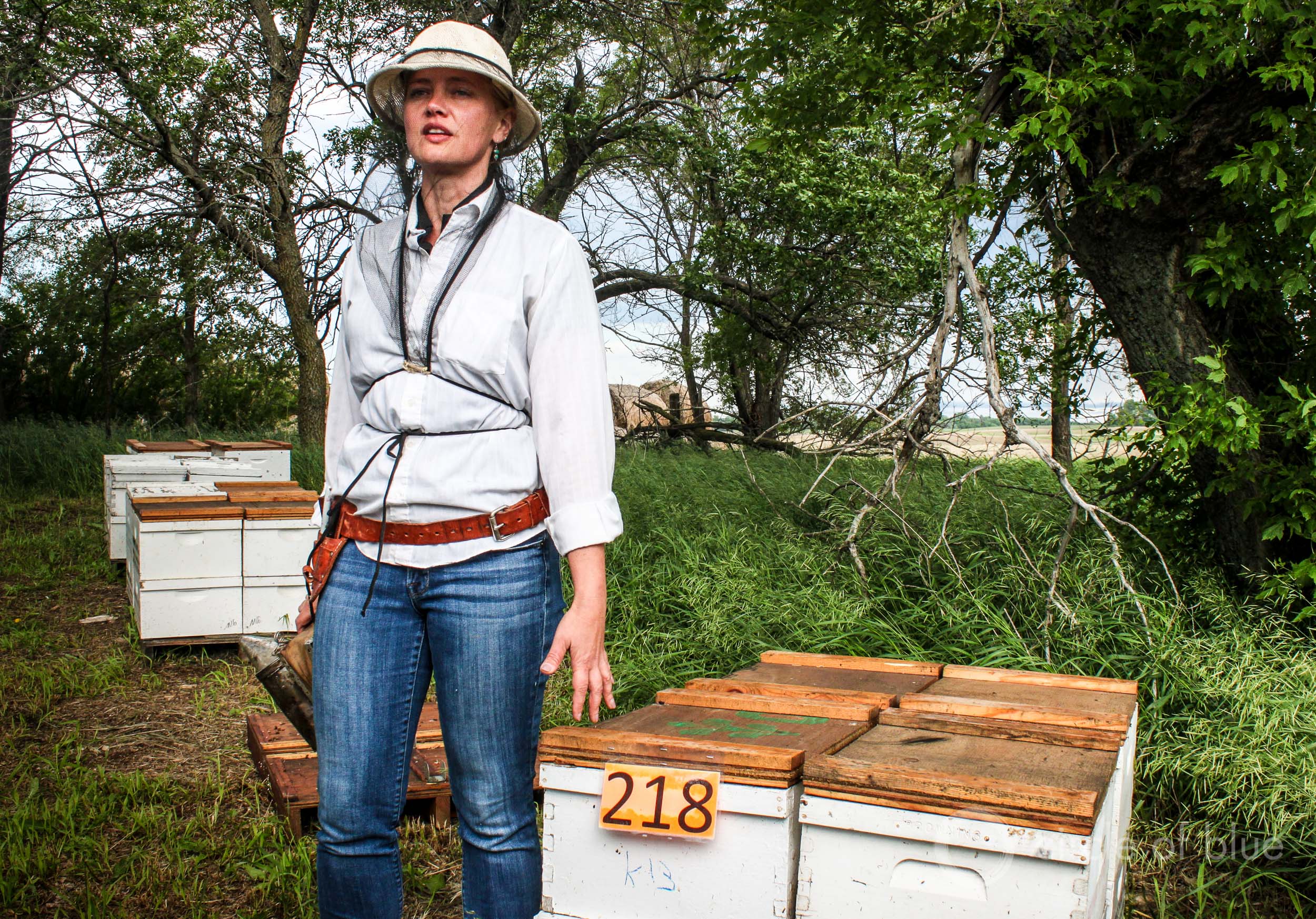
During the North Dakota summer, bee hives are almost as numerous as people. The state is home to nearly a quarter of the hives in the United States and is the country’s top honey producer. That abundance is largely owed to North Dakota’s remaining tracts of native prairie and restored grasslands. The astounding biodiversity of prairie plants—upwards of 100 species per square mile in some areas (38 species per square kilometer)—provides bees with the millions of blossoms required to make just one pound of honey. “It’s the last best place in America to produce honey,” said Zac Browning, owner of Browning’s Honey, one of the largest honey companies in the country. Danielle Downey, the director of operations for Project Apis m., explains bee behavior at a Browning’s harvesting and shipping facility near Jamestown, N.D., where hives can gain 3 to 3.6 kilograms (7 to 8 pounds) per day in peak forage season.
Photo © Codi Kozacek / Circle of Blue
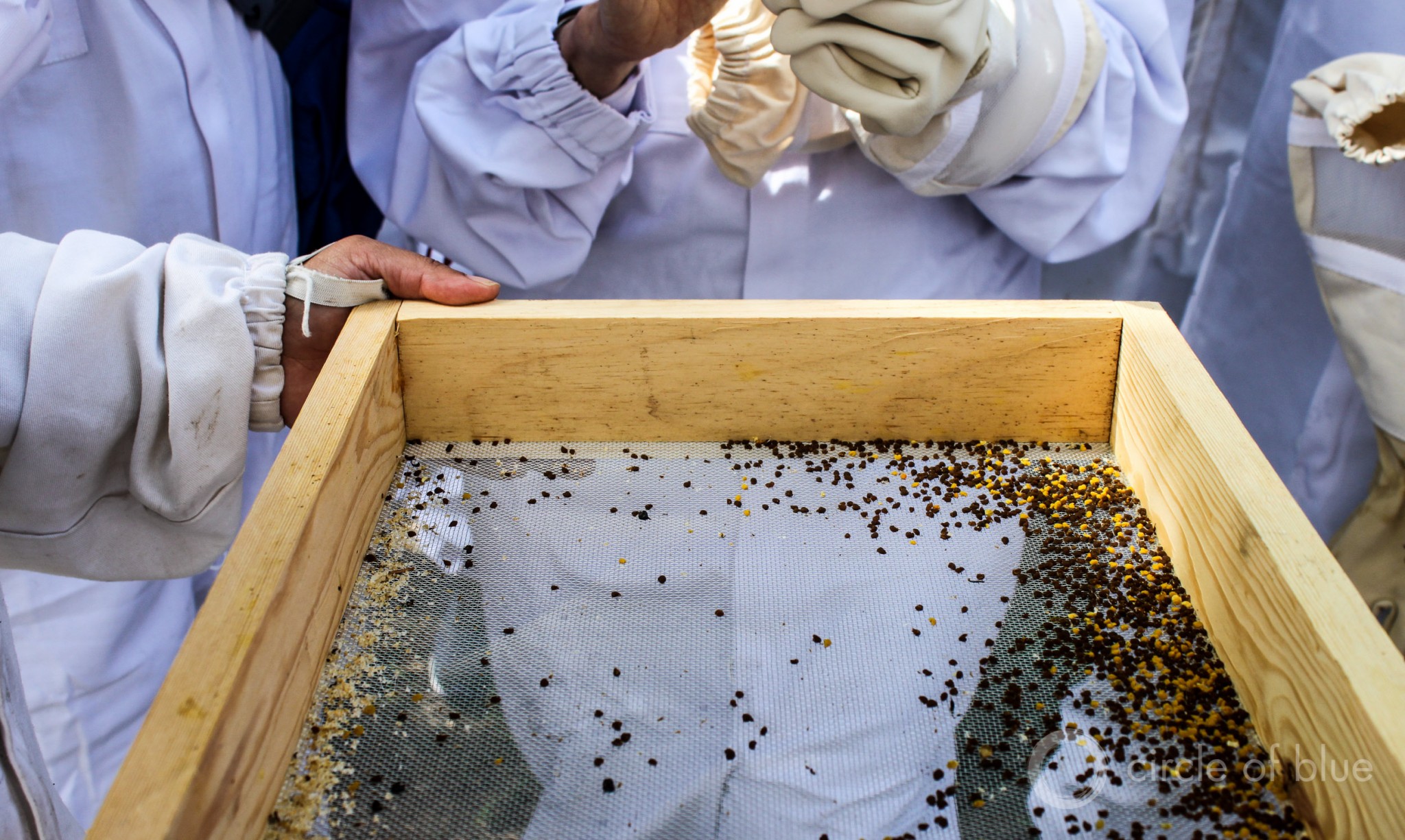
The loss of prairie and prairie potholes is also taking a toll on bees. Pollen samples collected by scientists at the U.S. Geological Survey’s Northern Prairie Wildlife Research Center show that bees forage on as many as 270 different plant species, a vast menu not offered by monocultures of corn or soybeans. As more acres are taken out of conservation and converted to cropland, the high-quality habitat that bees depend on disappears, with wide-reaching ramifications. North Dakota’s bees are employed coast to coast to pollinate crops from almonds to raspberries, and their time in the prairie is an important respite.
Photo © Codi Kozacek / Circle of Blue
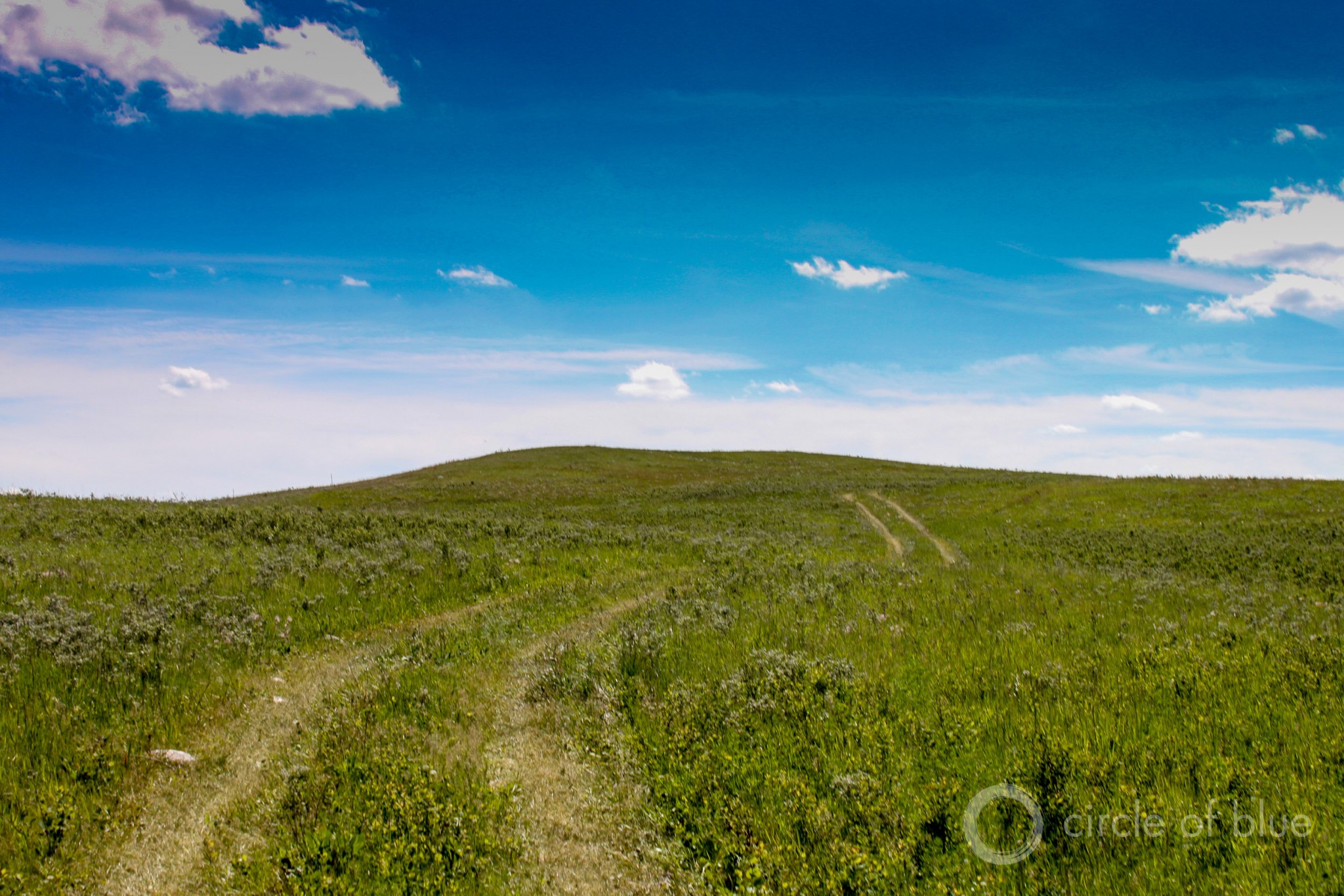
While the benefits—and decline—of the Prairie Pothole Region are well documented, few legal tools exist to protect it. There is no law in North Dakota prohibiting farmers from breaking native prairie, and grasslands can take centuries to fully regenerate after they are plowed. Provisions in the federal Farm Bill limit the benefits farmers can receive if they drain wetlands, but federal jurisdiction over isolated prairie potholes remains in limbo pending the outcome of legal challenges to the Environmental Protection Agency’s Clean Water Rule. Moreover, conservation groups that wish to buy and preserve land must first gain the approval of North Dakota’s governor, an often arduous process. Without regulatory clout, these groups recognize they need the cooperation of private landowners to save the prairie landscape.
Photo © Codi Kozacek / Circle of Blue
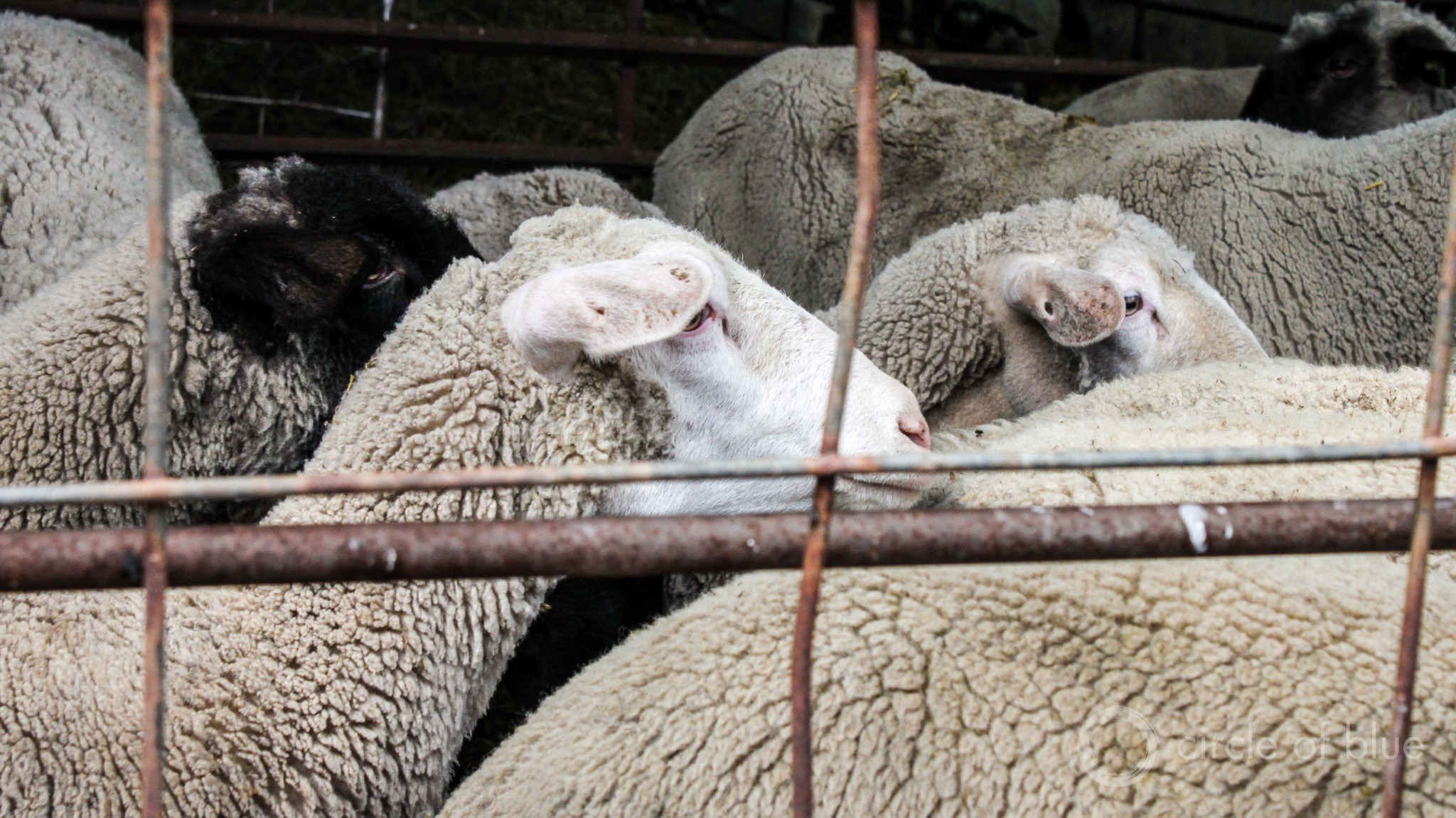
Brandon and Lacy Koenig raise sheep and up to 400 cattle on their farm in Stutsman County, N.D. The couple also takes part in the U.S. Fish and Wildlife Services’ conservation easement program, a voluntary initiative that buys the farming and development rights to private land. There are 30,000 easements covering nearly 1.2 million hectares (3 million acres) of wetlands and grassland across the Prairie Pothole Region of North and South Dakota. Under a wetland easement, landowners are prevented from draining, filling, or burning their wetlands. Grassland easements prohibit the cultivation of crops, but allow grazing at all times, and haying and mowing during certain months. Unlike the temporary contracts issued under the USDA’s Conservation Reserve Program, grassland and wetland easements protect the land in perpetuity. But like CRP, interest in conservation easements outpaces federal funding, leaving many landowners on waiting lists.
Photo © Codi Kozacek / Circle of Blue
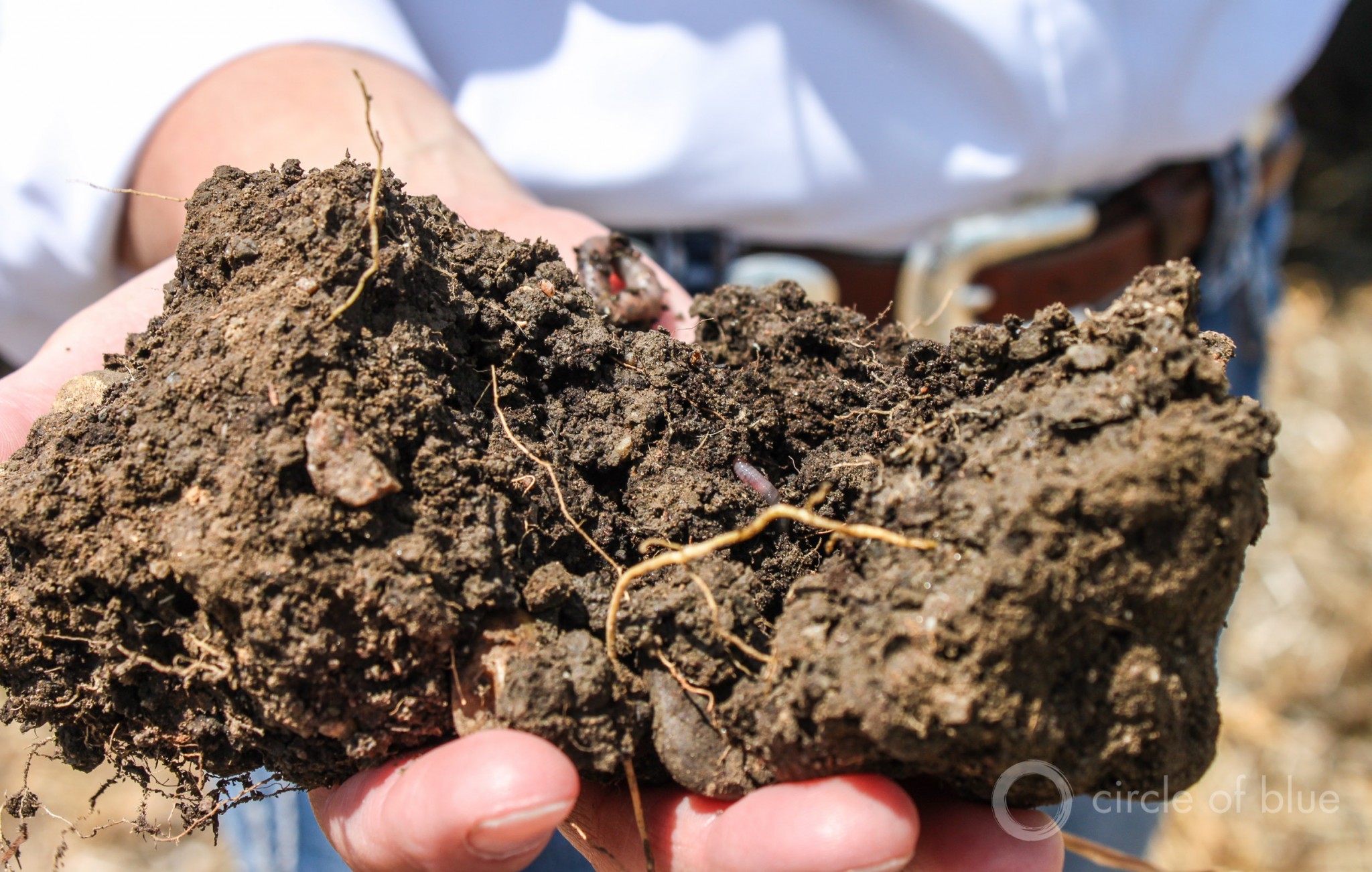
While he was surveying some of the 1,200 conservation easements administered by Chase Lake National Wildlife Refuge, refuge manager Neil Shook noticed a puzzling pattern: the grasslands used as cattle pastures were much more vibrant than those left to nature. The reason? Prairies in North Dakota evolved when millions of bison roamed the Great Plains. Grazing helps stimulate plant biodiversity and improve soil health, which in turn allows more water to infiltrate into the ground and reduces nutrient runoff to wetlands and streams. In the absence of bison herds, land managers are reaching out to cattle ranchers to keep the prairie healthy.
Photo © Codi Kozacek / Circle of Blue
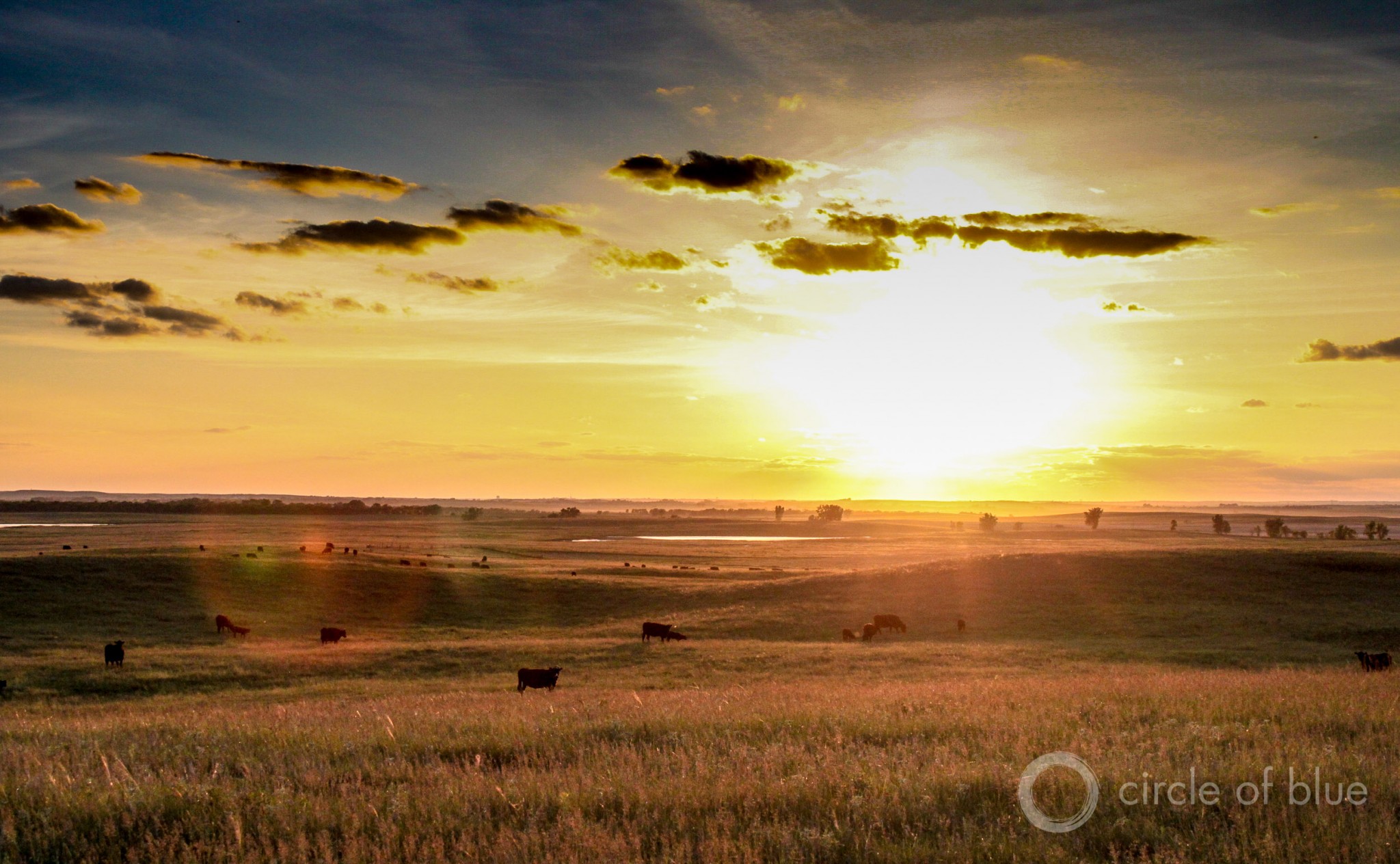
Cattle, however, are notably different from the wild ungulates that came before them. Bison herds moved swiftly through the grasslands, grazing intensely in one area before moving on to the next, and could take years to return to the same patch of prairie. Cattle do not migrate, and if left too long in the same area they will overgraze more palatable plants and leave others untouched. Overgrazing has earned cattle a bad name in the western and southeastern United States, where poor management practices have been linked to water pollution. To better mimic natural cycles in the prairie, some ranchers, including the operators of Black Leg Ranch near Sterling, N.D., have implemented grazing regimes that frequently move cattle and give pastures ample time to recover. Land managers with the U.S. Fish and Wildlife Service in North Dakota consider grazing to be a boon for conservation, and are encouraging other ranchers to follow suit.
Photo © Codi Kozacek / Circle of Blue
Reporting supported by a fellowship from the Institute for Journalism and Natural Resources.
A news correspondent for Circle of Blue based out of Hawaii. She writes The Stream, Circle of Blue’s daily digest of international water news trends. Her interests include food security, ecology and the Great Lakes.
Contact Codi Kozacek



